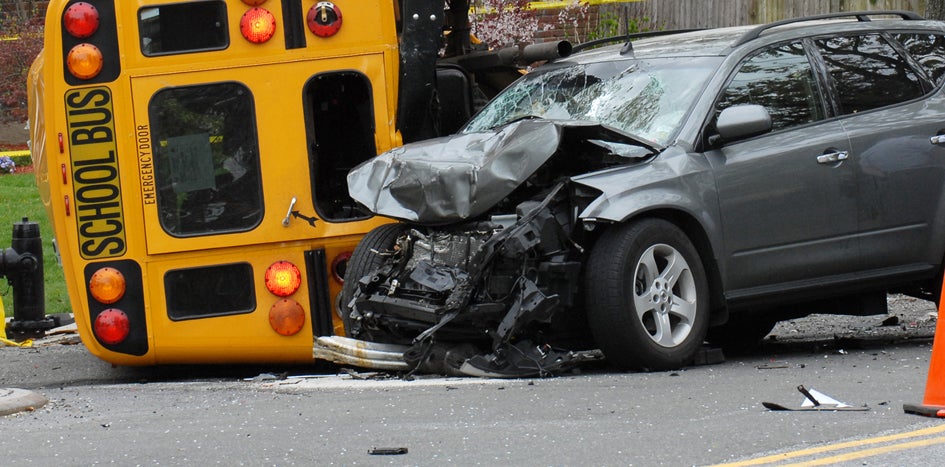Elements of Accident Prevention Plans
In 2018 alone, more than 15,000 education employees had to take days away from work due to workplace injuries, according to the U.S. Bureau of Labor Statistics. Such incidents can present serious issues for school administrators: along with workers’ compensation claims costs, workplace accidents can cause huge indirect expenses such as equipment repairs, replacement employee training, and lost work time while employees are recovering.
To keep your employees safe at work and avoid these serious expenses, your school should develop an accident prevention plan (APP). This proven strategy can protect your workers from common incidents, lower the direct and indirect costs of workplace injuries, and boost morale and productivity. It can ultimately save you and your organization time, money, and headaches.
What is an accident prevention plan?
An accident prevention plan is exactly what it sounds like: a plan to identify, assess, and prevent hazards in your organization. It is a long-term commitment to risk management that involves regular inspection, updates, and preventative actions, constantly evolving to address the risks that your organization faces.
Implementing an APP is shown to have lasting benefits. It can drastically reduce your district’s accidents, protecting your employees and saving your organization massive expenses each year. OSHA estimates that workplace safety programs like APPs can save employers between $4 to $6 for every dollar spent towards active accident prevention.
What is included in an accident prevention plan?
An effective APP equips your school to prevent or mitigate many accidents. It consists of several elements, including the following:
Management commitment
True accident prevention starts at the top. The first step of implementing an APP is to make a public management commitment to creating a safe workplace. This is done through a formal, written statement signed by your district superintendent or college president. Members of the TASB Risk Management Fund’s Workers’ Compensation program can access a premade template for your commitment statement.
Hazards analysis
Begin your accident prevention measures by identifying and analyzing the hazards present in your organization. Go over your history of workplace accidents, injuries, and workers’ compensation claims to identify common trends and situations that have led to incidents. Also consider how much your organization spends in response to employee accidents. Observe your work processes to adjust any behaviors that may cause accidents and conduct walkthroughs of your facilities to identify risks in your facilities.
Recordkeeping
Be sure to record every measure that you take to address accidents in your organization. Always document your training sessions, inspections, and hazard analyses. You should also record near-miss accidents as well, so you can be aware of incidents that have a high chance of occurring and prepare ways to address them. Reliable recordkeeping can help hold you responsible for your accident prevention measures going forward.
Training
Some may be surprised to hear that many accidents in schools involve teachers and administrators, rather than maintenance staff. This is often because administrative employees often don’t receive the same level of training that other workers do. At all levels of work, safety training is vital to protecting employees.
You can help mitigate accidents in all levels of your organization by creating a detailed plan for regular safety training that involves all your workgroups, including teaching staff and supervisors. Your training plan must be organized to follow certain thresholds and guidelines, and it should be regularly scheduled and thoroughly documented. Leverage services like an online training platform like the one offered to Fund members by Vector Solutions for easy-to-use training solutions, including assignments tailored to specific jobs and help developing training plans.
Safety inspections and audits
You should monitor all your workplaces with safety audits and inspections. Conduct walkthroughs of your facilities with a diverse team, which should include knowledgeable staff along with outside experts who can notice any risks that more familiar employees might gloss over. The goal of a walkthrough is to identify factors that contribute to workplace accidents. For example, if you have had workers’ compensation claims due to slips and falls in your kitchen, walk through it to see if it contains any factors that could cause or contribute to the injury.
Walkthroughs must be documented with checklists, which you can obtain from your Risk Solutions consultant. Work orders should be made after inspections to ensure that appropriate response actions are carried out. There are many ways you can respond to risks you discover: you can increase your training procedures, invest in continuing education programs, or perform maintenance or repairs to reduce risks in your property itself, for example. Effective walkthroughs can be conducted in multiple formats that meet your organization’s safety requirements — in-person, online, or even on paper.
Your plan should describe how often your inspections are, provide guidelines for response procedures for issues that they find, and identify the qualified individuals that should conduct your audits. They should be performed on a consistent schedule so you can keep your workplace safe and prevent any emerging hazards.
Accident investigation
Whenever an accident occurs, it is critical to conduct an investigation to identify its causes. An accident investigation can yield surprising results — if an employee is injured by slipping and falling, the cause may be more complex than simply, “the floor was wet.”
With the help of professionals or subject matter experts, an investigation can determine whether the accident occurred due to a lack of training, improper facilities maintenance, environmental factors, or other factors. Knowing the root causes of an incident will allow you to develop truly effective response strategies that keep your organization safe in the long term.
Revisions and reviews
An APP is not a one-and-done project. It takes time, effort, and lasting commitment. Schedule regular revisions and reviews to ensure that your plan meets the safety needs of your organization today and throughout the year. This is also an opportunity to set safety goals for your school and outline support activities to achieve them.
Help you can trust
Safety might look different this year due to the COVID-19 pandemic, but the Risk Management Fund’s commitment to protecting Texas schools hasn’t wavered. An accident prevention plan is necessary now more than ever due to the ever-changing nature of safety, and the Fund can help you develop a plan that meets your organization’s needs.
Risk Solutions Staff
The TASB risk solutions team includes risk solutions consultants and communications professionals who deliver training, consultations, articles, and resources that help Fund members control losses and their associated costs.
You May Also Like…
View All Related Insights
How To Manage and Mitigate Your Burn Risks
From bustling kitchens to science labs to maintenance and transportation shops, there are plenty of opportunities for burns to occur at your school or community college.

The Importance of a Thorough Accident Investigation
Conduct accident investigations to uncover the root causes of workplace injuries, correct them, and reduce the risk of similar injuries.

Your Chemical Disposal Playbook
Learn why and how to safely and legally dispose of chemicals that are expired, improperly stored, or unnecessary.

Balancing Student Privacy With School Security
Clear backpacks, metal detectors, and other security measures can make schools safer, but they can also increase liability risk associated with student privacy violations.
